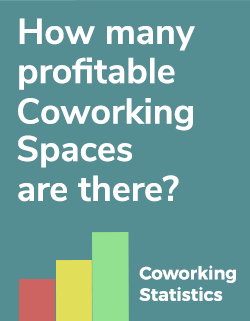The bankruptcy was no longer a surprise. WeWork stopped paying interest in early October. It also stopped paying rent for some locations. The company initially said it was doing so to improve its negotiating position. Still, alarm bells were ringing among shareholders. The last deadline for creditors passed without payment. Now WeWork is insolvent.
The company had been in trouble for a long time.
WeWork has probably never been profitable. Its long-planned IPO in 2019 fell through. Then came the pandemic. The company didn't go public until 2021, via a spac. Since then, WeWork's stock price has mostly followed one direction - down. In 2023, the stock plunged another 95% through September alone, meaning shareholders lost virtually everything long before the bankruptcy.
WeWork was once said to be worth US$47 billion, as it is again in many news stories that copy news stories that copy other news stories. It was a fictional valuation based on buying a small fraction of all existing shares. This is normal in the stock market with thousands of buys and sells by different trading partners every day. But based on a single purchase every few months, such an overall valuation was completely meaningless and unrealistic. At best, the value was suitable as a stimulant for some investors or as a story for click-worthy sensationalism in stock market and start-up news.
This November, however, buyers could theoretically have gotten WeWork for almost nothing if they had also taken on the debt. But no one wanted to. So the company's management filed for bankruptcy.
WeWork seeks a fresh start through Chapter 11
WeWork chose not to seek liquidation. Instead, it filed for Chapter 11 of the US Bankruptcy Code. This step does not necessarily mean the end of WeWork, but is being taken in the hope that it will continue to exist. In addition, many WeWork companies outside the US have not yet been affected.
If the bankruptcy court approves the filing, WeWork will be able to continue its day-to-day operations with employees and customers while freeing itself from legacy liabilities. For example, Chapter 11 allows for converting debt and interest payments into company stock or the immediate termination of onerous lease agreements.
This approach not only gives WeWork a chance to create a profitable business model. After restructuring, it could even continue its business with a competitive advantage over other coworking spaces.
Does the business model allow WeWork to continue, as many analysts have doubted for years?
The answer to why WeWork went bankrupt is simple. Expenses exceeded revenues. WeWork lacked the cash to cover the funding gap. And the company could not get a new loan. However, a more detailed analysis would provide better answers to the question.
Like many high-growth startups, WeWork was built on not one, but two business models. Both models could feed and destroy each other.
One business model was to attract customers in the "consumer market", in this case, the coworking space market. The other business model targeted customers in the financial market, as a booster. These customers would drive rapid growth and, later, shareholder returns.
The company's reports suggest that only the business model of the financial market has imploded. In the coworking space market itself, however, things are going much better for WeWork.









